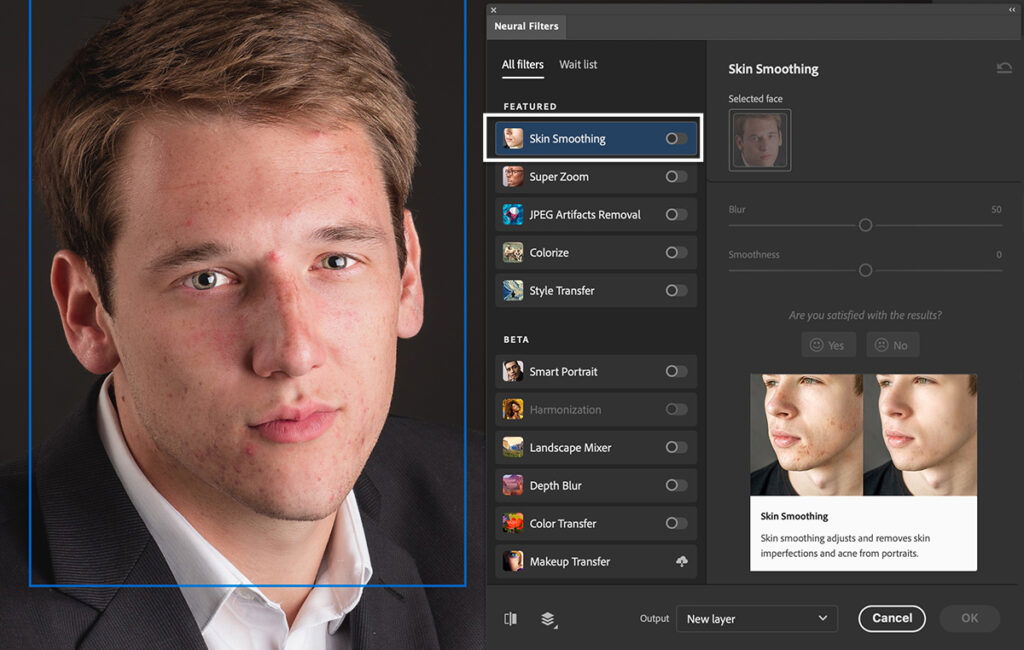How Designers Use Photoshop’s Neural Filters for Portrait Perfection introduces a transformative approach in digital design that is revolutionizing the art of portraiture. With an array of features that leverage advanced AI technology, Photoshop’s Neural Filters empower designers to enhance, modify, and perfect portraits with unprecedented ease and creativity. This tutorial dives into how these innovative tools enable artists to achieve realistic and stunning results while saving time and effort in their workflow.

The use of Neural Filters allows designers to make adjustments that were once time-consuming, such as skin smoothing, background alteration, and even facial feature modifications. As we explore the capabilities of these filters, you’ll see how they not only streamline the creative process but also open up new possibilities for artistic expression.
In today’s fast-paced world, understanding the impact of technology on our daily lives has become increasingly important. From the moment we wake up to the sound of our alarm clock to the time we fall asleep while scrolling through our smartphones, technology has woven itself into the very fabric of our existence. This article explores the various ways technology influences our lives, both positively and negatively, and how we can navigate this evolving landscape.One of the most notable benefits of technology is its ability to connect us with others, regardless of geographical boundaries.
Social media platforms like Facebook, Instagram, and Twitter have revolutionized the way we communicate, enabling us to share our experiences and thoughts with friends and family around the globe. Whether it’s a quick text, a video call, or a shared photo, technology has made it easier than ever to maintain relationships. However, it has also raised concerns regarding privacy and the authenticity of these interactions.
With the rise of virtual friendships, one must ask: are we sacrificing genuine connections for mere online presence?In the professional realm, technology has transformed how we work and collaborate. Remote work has gained immense popularity, allowing employees to perform their tasks from the comfort of their homes. This flexibility has led to increased productivity for many, as it reduces commute times and offers a more personalized work environment.
However, it also blurs the lines between work and personal life. The expectation to be available around the clock can lead to burnout and stress, demonstrating that while technology can enhance our work-life balance, it can also disrupt it.Moreover, technology has revolutionized education, making learning more accessible than ever. Online courses, webinars, and educational apps have democratized knowledge, allowing anyone with an internet connection to learn new skills or enhance existing ones.
This has particularly benefited individuals in remote areas where traditional education resources may be limited. However, the reliance on digital tools also presents challenges. For instance, students may struggle with distractions from social media or gaming, which can hinder their academic performance. Additionally, there is a growing concern regarding the digital divide, as not everyone has equal access to technology, perpetuating existing inequalities.Healthcare is another sector where technology has made significant strides.
Telemedicine, wearable devices, and health-monitoring apps allow patients to take charge of their health like never before. With the ability to consult with doctors remotely and track vital signs through smart devices, patients can manage chronic conditions more effectively and receive timely medical advice. Yet, as with any advancement, there are downsides. A reliance on technology may lead to decreased interpersonal relationships between patients and healthcare providers, which are crucial for effective treatment.
Moreover, concerns regarding data security and patient privacy loom large, with hackers increasingly targeting health information databases.In terms of entertainment, technology has transformed how we consume media. Streaming services like Netflix and Spotify have disrupted traditional models of television and music consumption, allowing users to access vast libraries of content at their fingertips. This convenience has led to a shift in how we engage with stories and music, fostering a culture of binge-watching and on-demand listening.
However, the abundance of choices can be overwhelming, leading to decision fatigue and a paradox of choice where individuals struggle to make selections from an extensive array of options.Yet, while technology has its perks, it also comes with a set of challenges that cannot be ignored. One of the most significant issues is the potential impact on mental health. Studies have shown a correlation between excessive social media use and feelings of anxiety, depression, and loneliness.
The polished images and curated lives we see online can create unrealistic expectations and foster feelings of inadequacy. Moreover, the addictive nature of technology, particularly smartphones and gaming, can lead to unhealthy habits and impact our ability to focus and engage in face-to-face interactions.Another concern is the environmental impact of our growing reliance on technology. The production and disposal of electronic devices contribute to e-waste, which poses significant environmental hazards.
As we continue to upgrade our gadgets at an alarming rate, it is essential to consider sustainable practices when it comes to technology consumption. Companies are increasingly being held accountable for their environmental footprint, and consumers are becoming more conscious of their choices, seeking out eco-friendly products and recycling options.As we navigate this complex landscape, it is crucial to strike a balance between embracing the benefits of technology and mitigating its drawbacks.
Developing digital literacy skills can empower individuals to make informed decisions about their technology use. This includes understanding how to protect personal information, recognizing the signs of online addiction, and fostering healthy relationships both online and offline.In conclusion, technology is an integral part of our daily lives, shaping how we communicate, work, learn, and entertain ourselves. While it offers numerous advantages, it also presents challenges that require careful consideration.
By being mindful of our tech habits and advocating for responsible use, we can harness the power of technology to improve our lives while minimizing its potential downsides. As we look to the future, it is vital to foster a culture of balance, ensuring that technology enhances our humanity rather than detracting from it.




